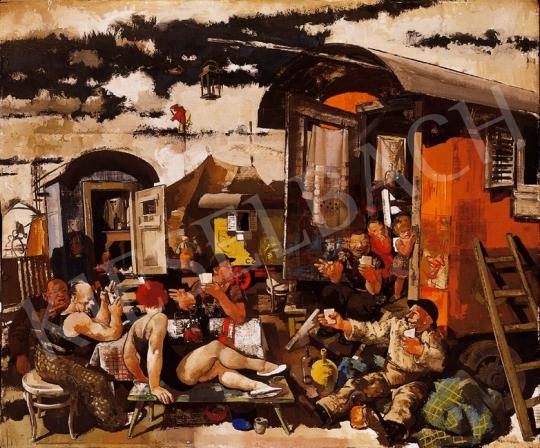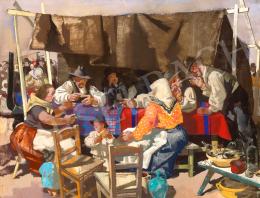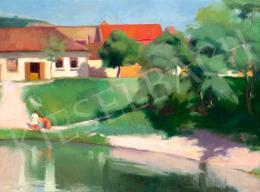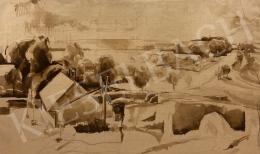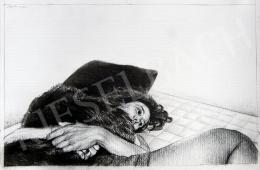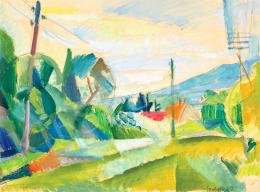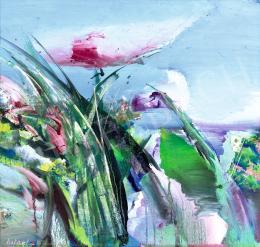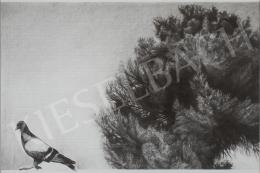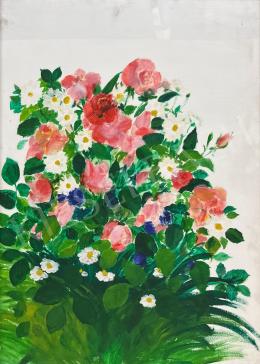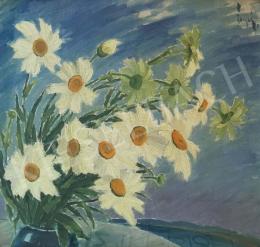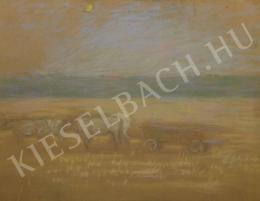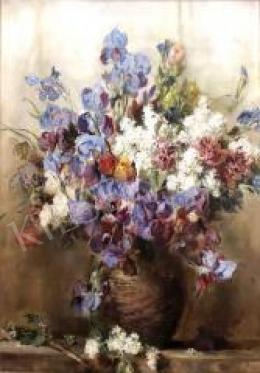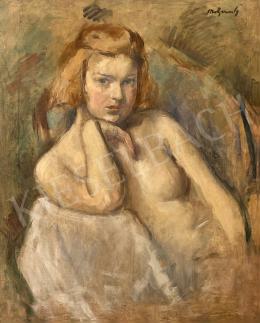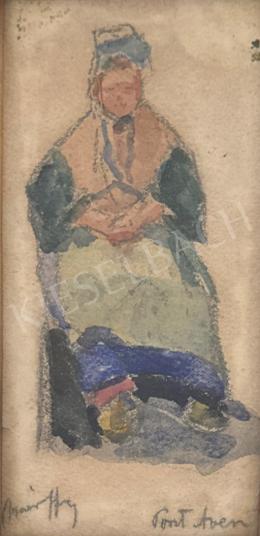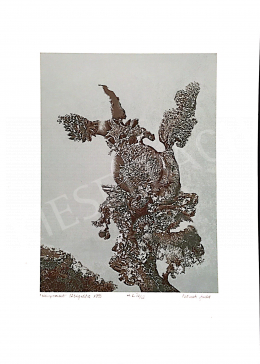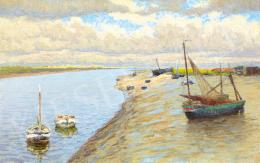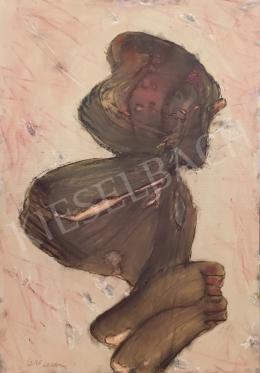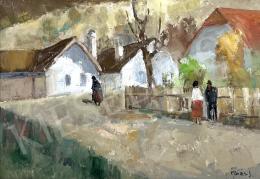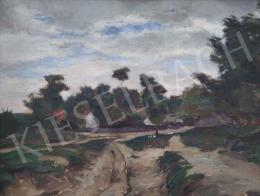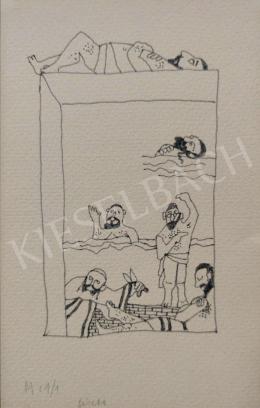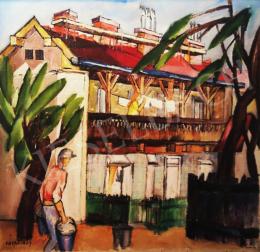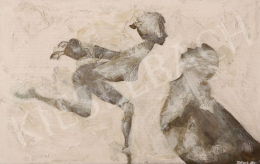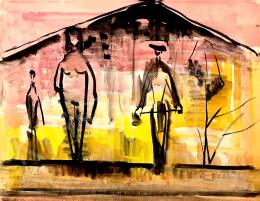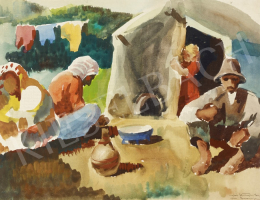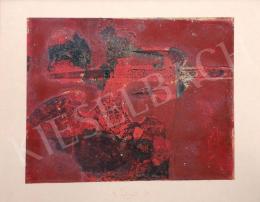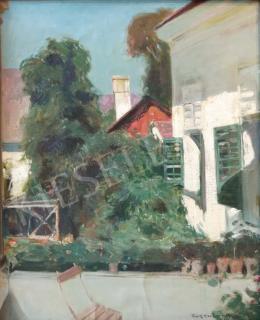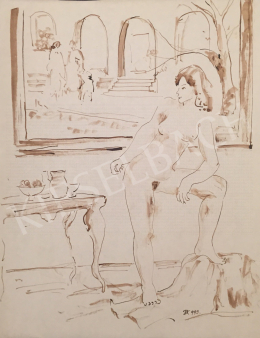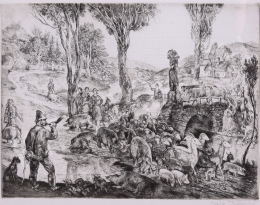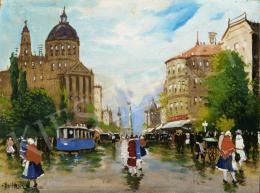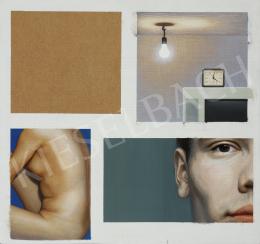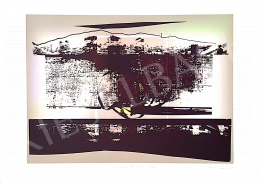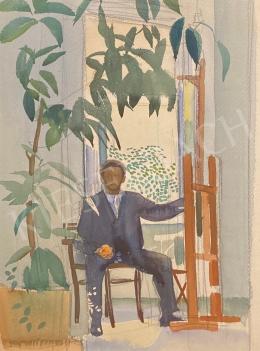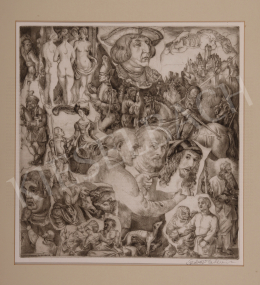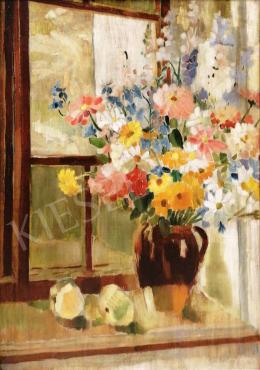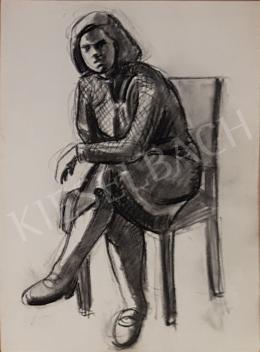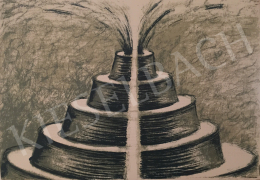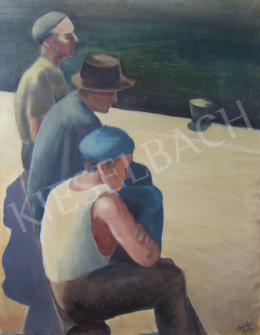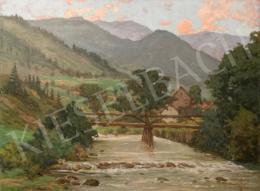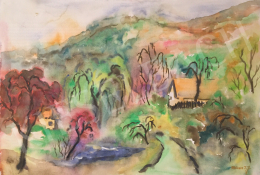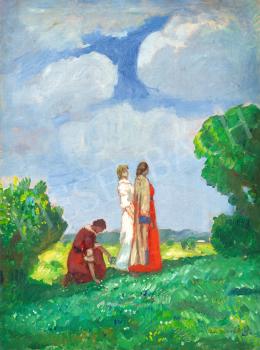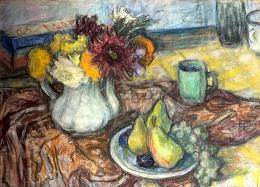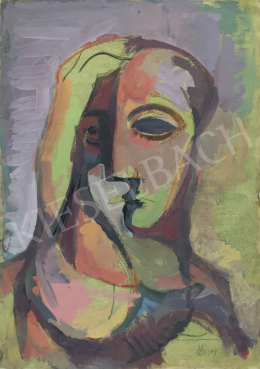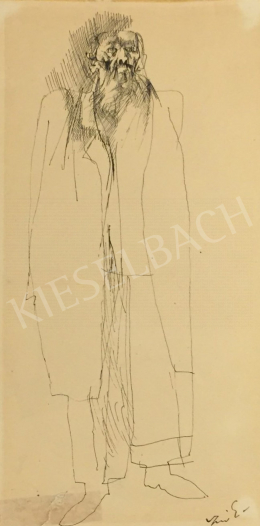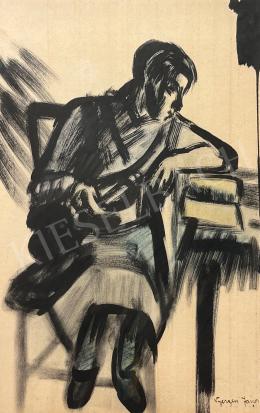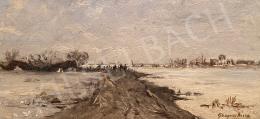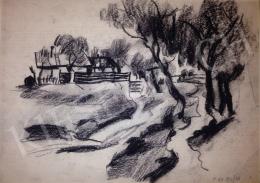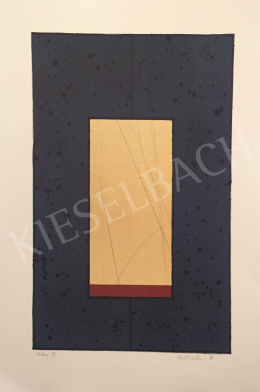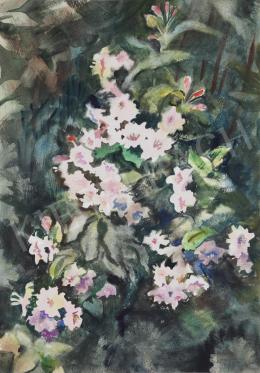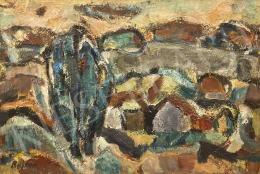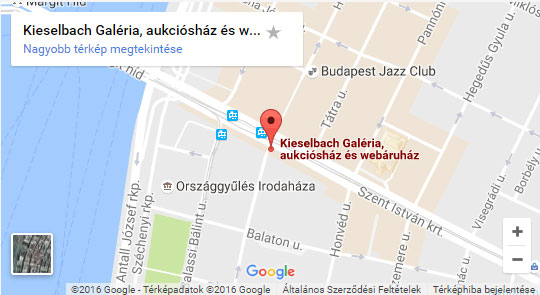Exhibited:
Vilmos Aba-Novák Retrospective Exhibition. 1942. National Salon Art Society. Item 53.
Ungarische Malerei der Gegenwart. 1942-1943 Berlin, Dresden, Vienna, Wroclaw.
L'Art Hongrois Moderne. 1944. Bern, Kunsthalle.
Aba-Novák Retrospective Exhibition. 1962. Hungarian National Gallery ( Item 178.)
Reproduced:
Ungarische Malerei der Gegenwart. 1942-1943. Berlin, Dresden, Vienna, Wroclaw. Catalogue, pic. No. 1. (Zirkus)
L'Art Hongrois Moderne. 1944. Bern, Kunsthalle. Cat. pic.No. 4.( Scene de cirque)
Magdolna B. Supka: Aba-Novák Vilmos. Budapest, 1966. Pic.84.
The two most outstanding pieces of the exhibition are Mednyánszky's and Aba-Novák's pictures. Both paintings are huge and museum pieces but these are the only things in which they are similar. It is very exciting to compare the worlds of these two valuable pieces of Hungarian painting: Mednyánszky's melancholic, suffering mental character forms an eye-catching contrast to Aba-Novák's vivid, robust personality, his will to live. While the one escaped from life by creating a personal religion, the other radiated physical and mental health. Mystical, whirling forms, darkness and stifled colorit appear on Mednyánszky's canvases in contrast with Aba-Novák's clean stains of colors, accurate construction and his playful virtuosity. This technical craftsmanship is the first to fascinate the viewer in the picture under discussion. The surface of the painting, which is made rhythmical by homogenous stains of colors, is enlivened by the drawing-like elements of brightening glasses and grinning heads on the placates. Aba-Novák's legendary technical knowledge was coupled with an unbelievable manual talent and compositional ability. In his writings he often wrote about his antipathy to the abstract, analytical experimenting of the 'isms'; he said that strict construction was an ineluctable starting point of a picture. He respected Picasso's and Braque's art but criticised their late followers. He thought that the time of the problems of forms was over, the artist's task should be 'to create life on the canvas'. His artistic credo resulted that the theme, the 'story' of his pictures, that was banished by the 'isms', gained back its original status and became a defining element of the paintings. This is not an isolated phenomenon at that time: in the Europe of the 1920s the rising of traditional values in painting was prominent. The message of the work of art, craftsmanship and the strict composition became the scale of quality again. The 'revival' of some great, traditional themes, one of which was the world of circus, was also not surprising.
The mysterious, ambiguous world of the arena has inspired artists since the beginnings. Watteau's clown, Cezanne's Harlekin and Pierrot or Degas's acrobats and Serat's equestrienne are only some of the several examples. Some artists, like Picasso or Aba-Novák, made whole series of circus-pictures. The attraction of this peculiar world is quite understandable: the ambiguity of it, the antagonism of the world of a performance and that of the life behind the scenes is an exciting theme. On the other hand, the figure of the clown often symbolised the tragic dichotomy of artist's life. In many pictures the represented clown is a self-portrait.
Aba-Novák began to paint his circus-pictures after his return from the Italian study tour. His representing of the acrobats, whose rest seems just as peculiar as their work, and is so different from everyday life, is like an objection against the banality of civil life. Aba-Novák's ability to create symbols can be noticed here. The comedians, masks and hoofers remained among his topics all through his life, as it is also represented by this valuable, late picture.
Molnos, Péter






